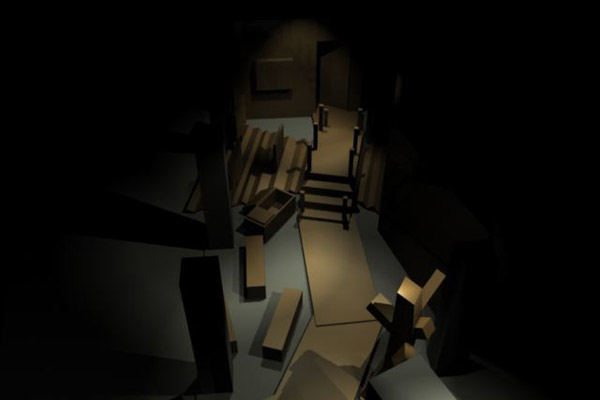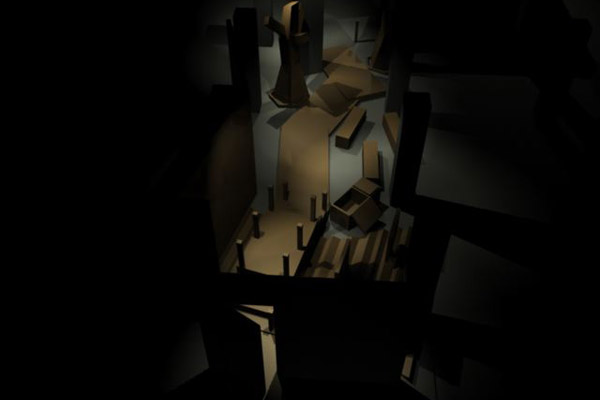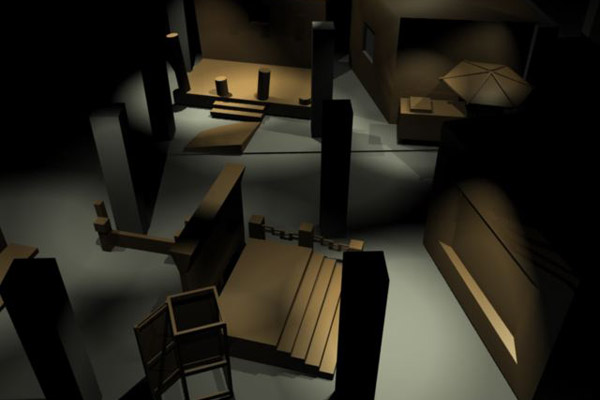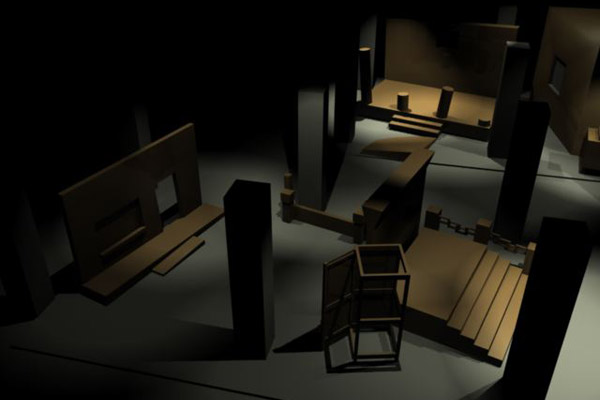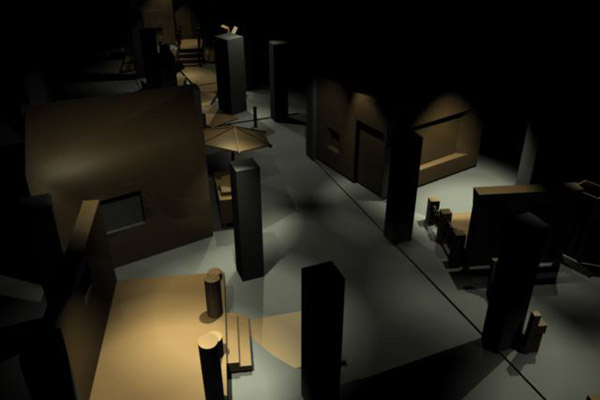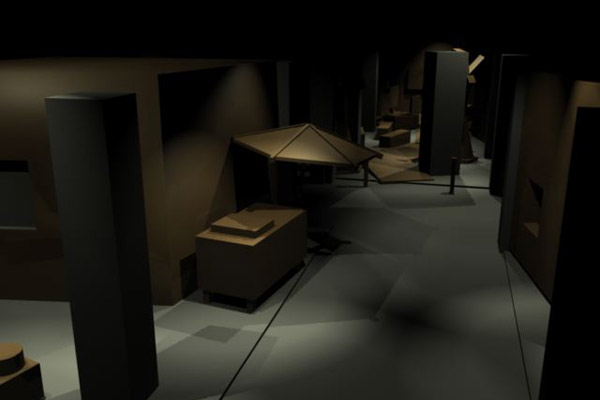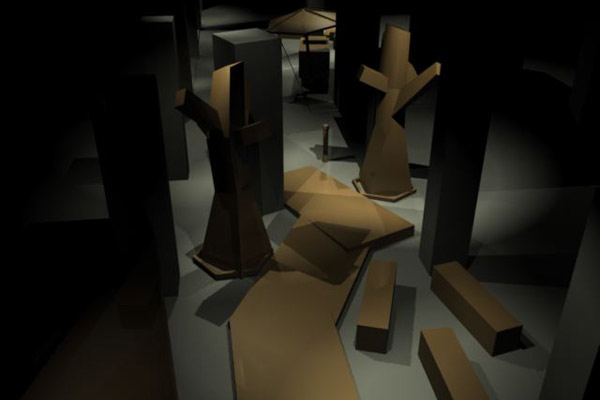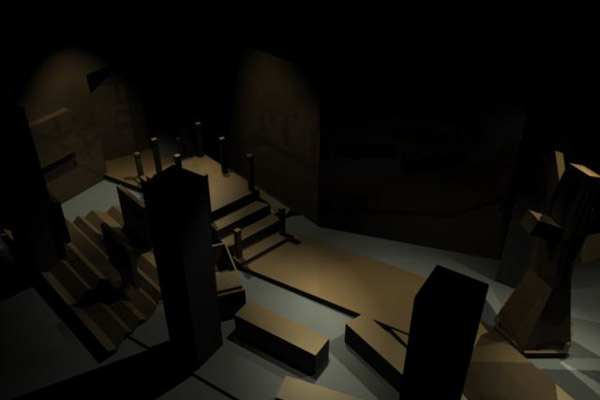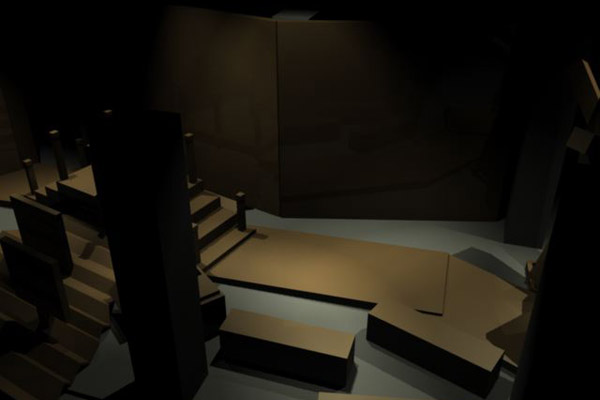SEDUCTION. A Theory-Fiction between the Real and the Possible
June 2007
Opening exhibition of Borderline Moving Images 2007
SoHo Shangdu Underground Parking Lot | Beijing, CN
curator :: Beatrice LEANZA
exhibition design :: LI Naihan
artists :: Fikret ATAY, Johanna BILLING, Candice BREITZ, Mircea CANTO, Calin DAN, Claire FONTAINE, 高世强 GAO Shiqiang, Clarisse HAHN, Teresa HUBBARD & Alexander BIRCHLER, Jesper JUST, Mathieu LAURETTE, Melik OHANIAN, 欧宁 OU Ning & 曹斐 CAO Fei, 石青 SHI Qing, Ulla Von BRANDEMBURG, 吴文光 WU Wenguang, 张培力 ZHANG Peili.
design background ::
Through the ideal city, the grand socialist city, the modern city — the social, subjective and political space are represented.
The space design accommodates the narrative of the different video pieces into a constructed environment of ephemeral simulation, where the spatial qualities of certain Beijing urban tropes and structures of spatial signification, sociality, movement, will be juxtaposed to specific filmic stories. Seduction is a staged fiction that wishes to provoke how forms and processes of production ultimately surface while questioning the reception and understanding of cultural orders as reconstructed truths. In the underground site of SoHo Shangdu parking lot, the experience offered to the viewer and the challenge put on the works presented is that of reconsidering the way they expose themselves to each other (as belonging to diverse critical/cultural/information systems and subjective spheres) while restoring that minimum distance necessary for the latent meaning of the image to remain still and become a point of collective meeting and counter representation. In this sense the show also puts together filmic languages that are very distant yet articulates vivid coded systems within a hybrid environment. The participation of the public in the reading of the show is thus one based on displacement and surprise, unattended meetings with subconscious and alien “possibilities” of existence that the one dimensional media performance of the modernizing process often hides, yet perpetuates.
The main space setting is organized onto a LOOPING STRIP (representing a mega-form —> an intersection between urban sprawl and the mega-structure). It embeds three MAIN MOMENTS that metaphorically represent:
- The Ideal City (a symbol of NATIONAL IDENTITY – it is the SOCIAL SPACE) Universal patterns rule the city, the ritual and prescribed city, hierarchical, and heroic. Space = ideal society. It is a place of utmost rules; the total trompe l’oeil. Here dwells: nostalgia, tradition, public order, subtraction, invisible flexibility, fluid dialogue, rumors.
- The Modern City (symbol of MODERN IDENTITY – it is the SUBJECTIVE SPACE) Skyscrapers, extra wide avenues, cloverleaf junctions, a place of imminent collapse. It is reversible space. Here dwells: cold, mental distress, schizophrenia, alienation and hyper simulation, camouflaging.
- The Grand Socialist City (symbol of POLITICAL IDENTITY – it is the POLITICAL SPACE) Simulated baroque city of grandiose staged power, the political majestic city, pompous, statist. Law of Space = Power. Here dwells: authority, personal disorder, suspended motion, law, silence.
The movement is represented on a looping strip, so that the three moments of the city become a merged continuum; all of them coexist, fade into one another, are one the facet of the other. While offering the viewer a circular narrative, he/she is left with a sense of necessary recollection. Is the journey ended?


